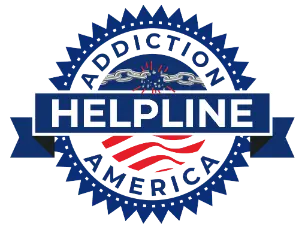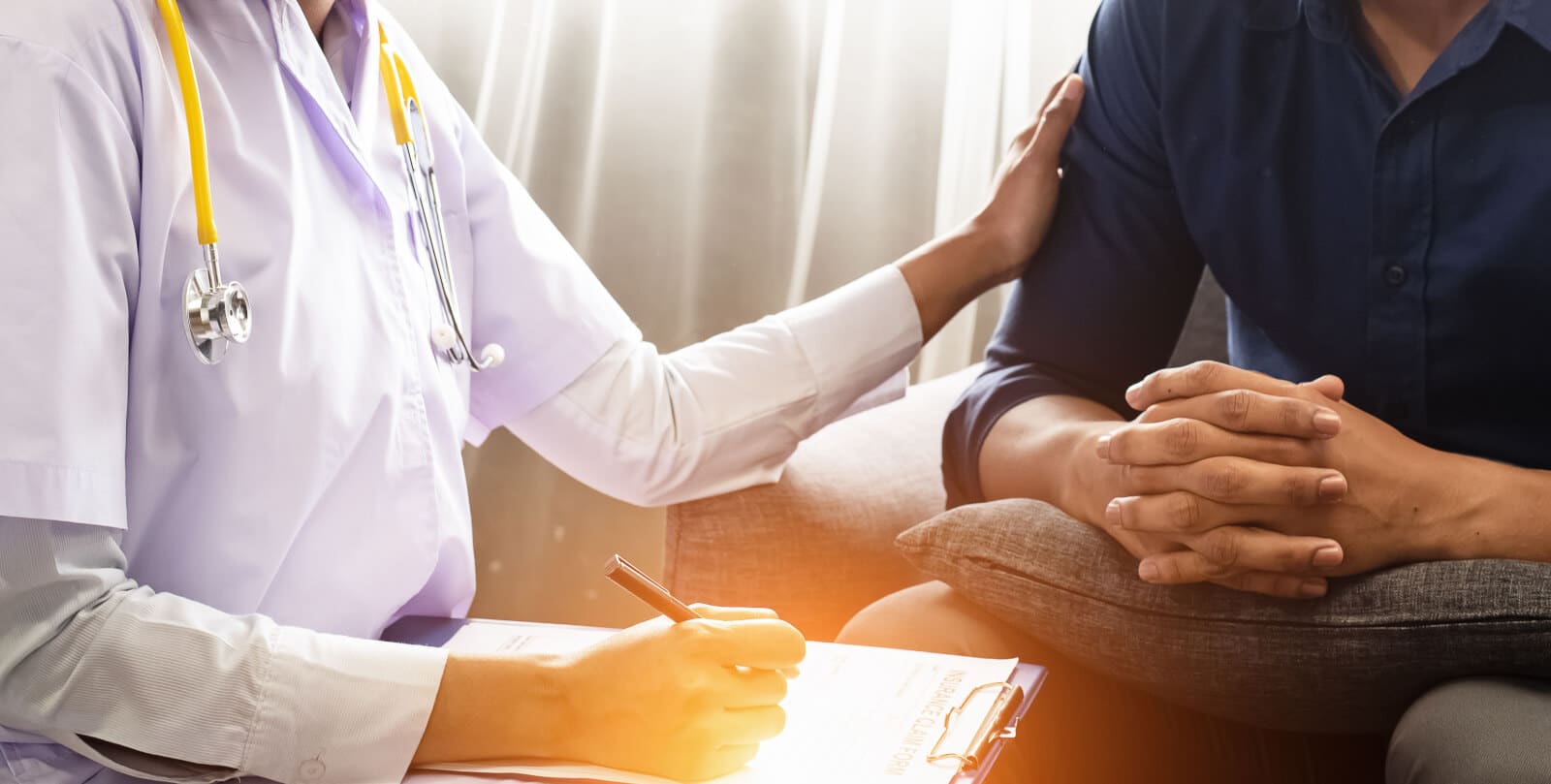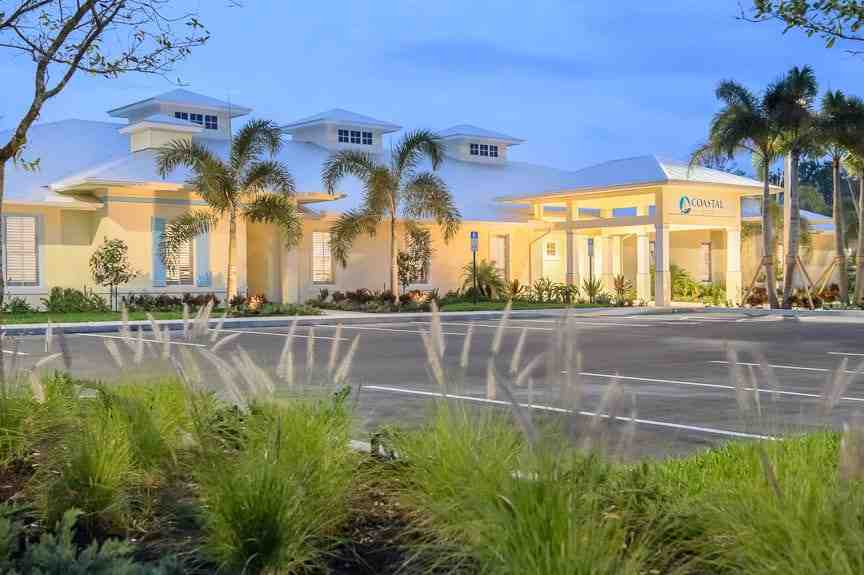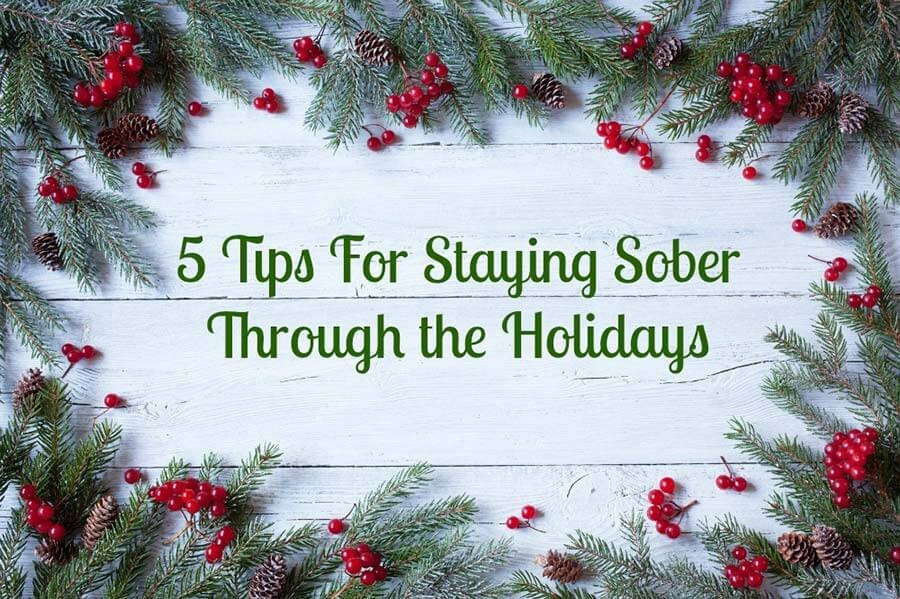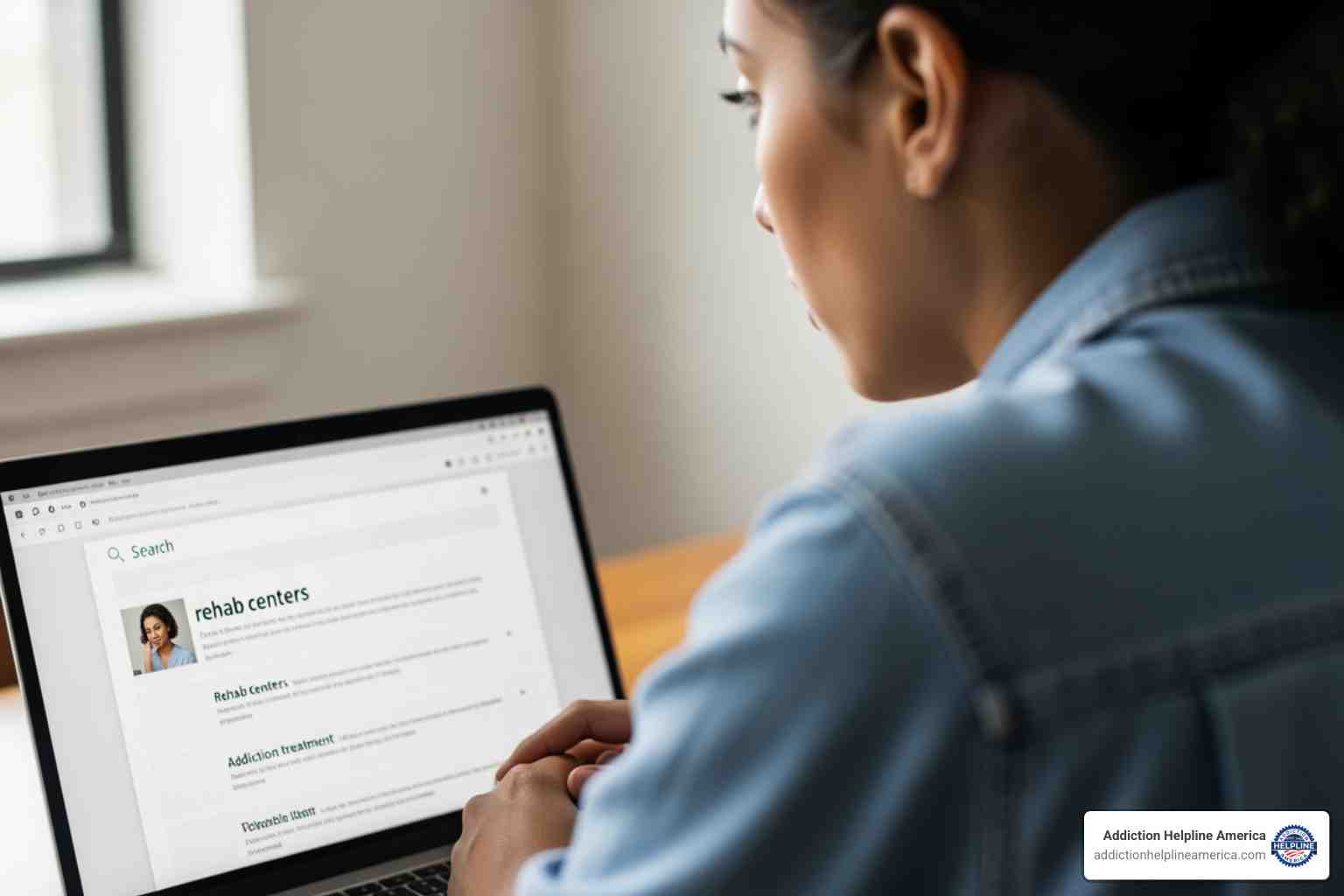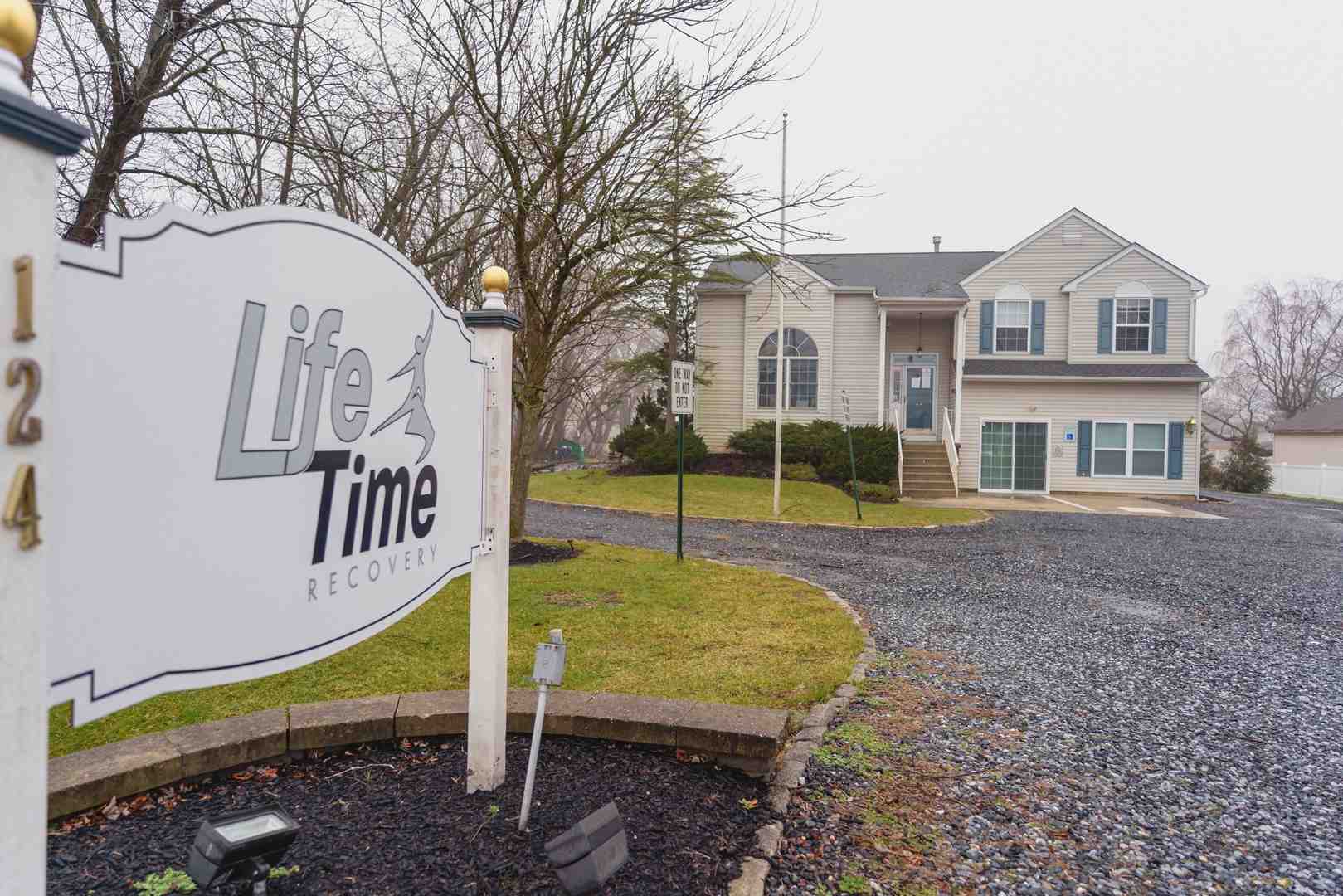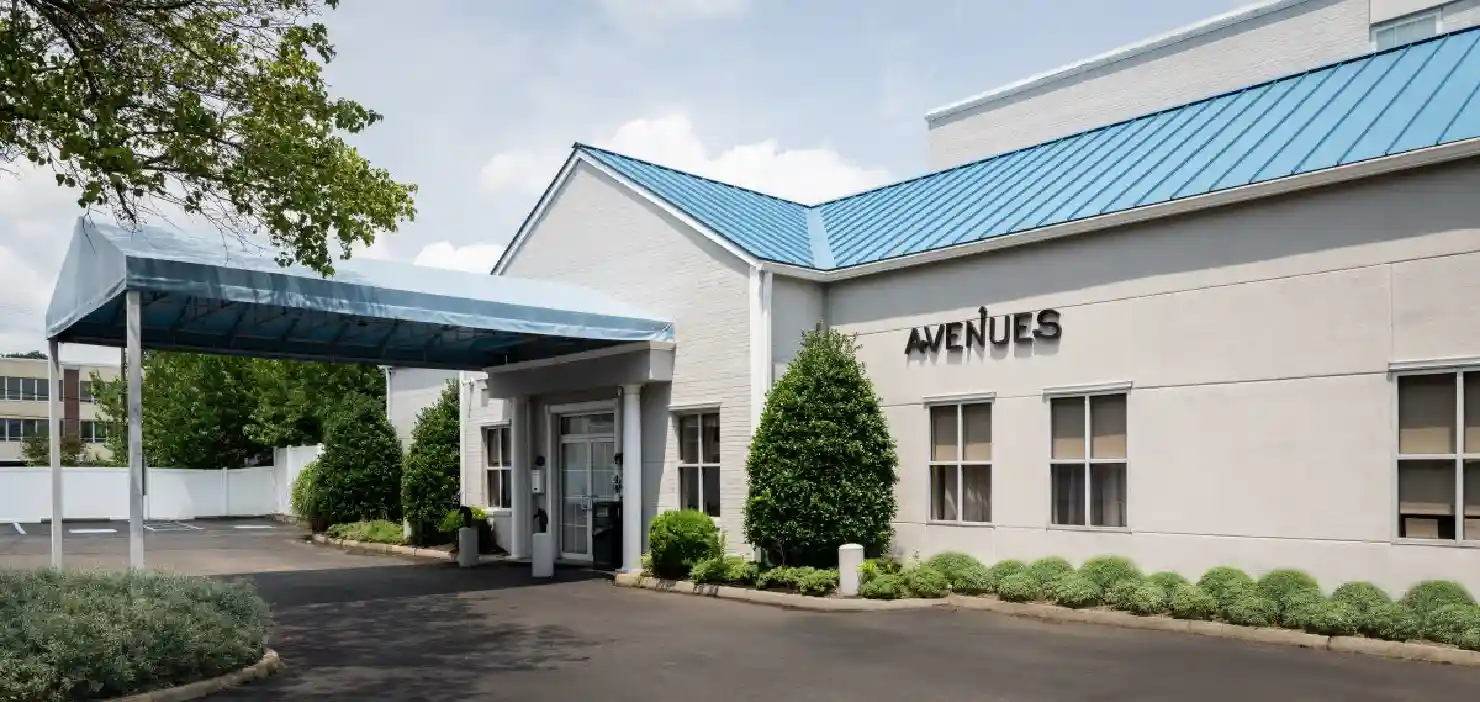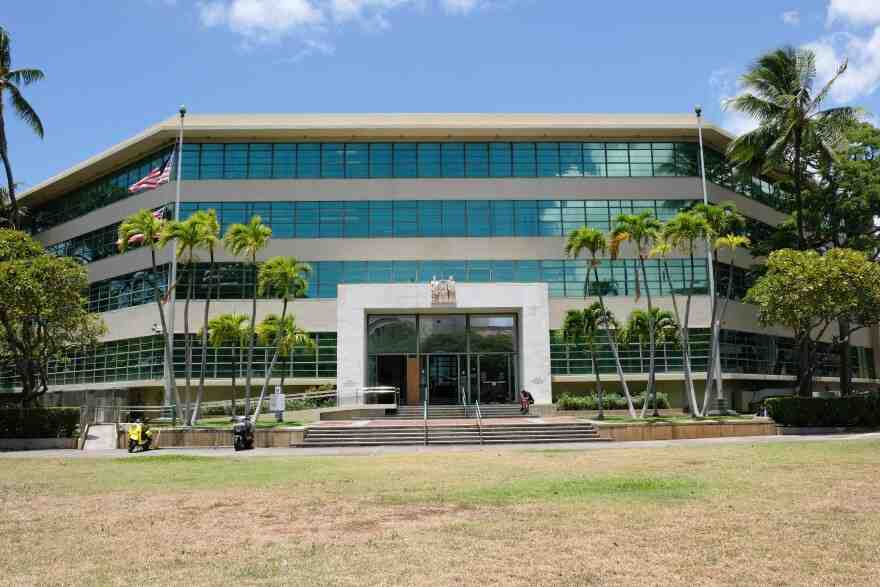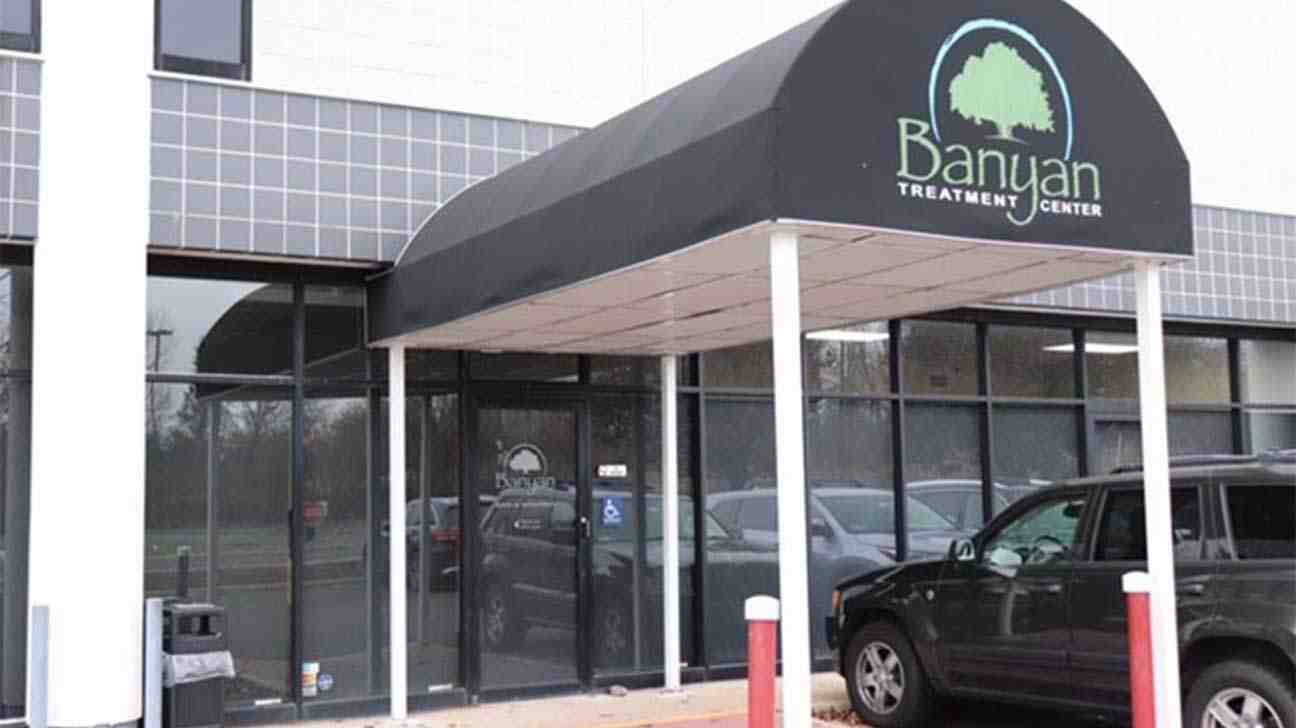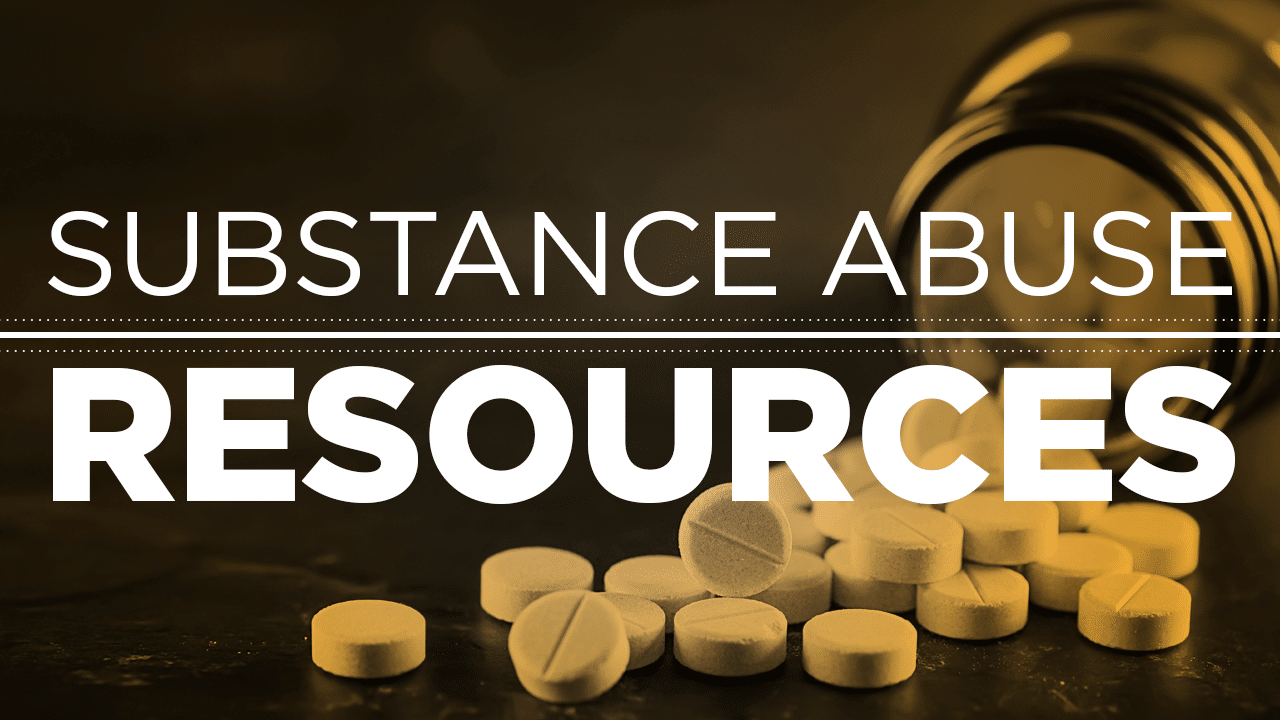
Why Finding the Right Substance Abuse Help Can Save Your Life
Substance abuse help is available 24/7 through hotlines, treatment locators, and support groups. If you or a loved one is struggling, immediate options are available.
Emergency Resources:
- 988 Suicide & Crisis Lifeline: Free, confidential support 24/7.
- SAMHSA National Helpline: 1-800-662-HELP (4357): Treatment referrals and information.
- 911: For overdose or other life-threatening situations.
Finding Treatment:
- Detox programs: Medically supervised withdrawal.
- Inpatient rehab: 24/7 residential care.
- Outpatient programs: Treatment while living at home.
- Medication-assisted treatment (MAT): Combines medication with therapy.
Support Networks:
- 12-step programs like Alcoholics Anonymous and Narcotics Anonymous.
- Family support groups like Al-Anon and NAR-Anon.
- Online counseling and telehealth options.
Substance use disorder is a treatable medical condition that affects millions. It changes brain chemistry, making it hard to stop using despite negative consequences. However, recovery is possible with the right treatment and support.
Addiction Helpline America connects individuals and families with vital substance abuse help. Our 24/7 helpline and referral services provide personalized guidance to find the right treatment for lasting recovery.
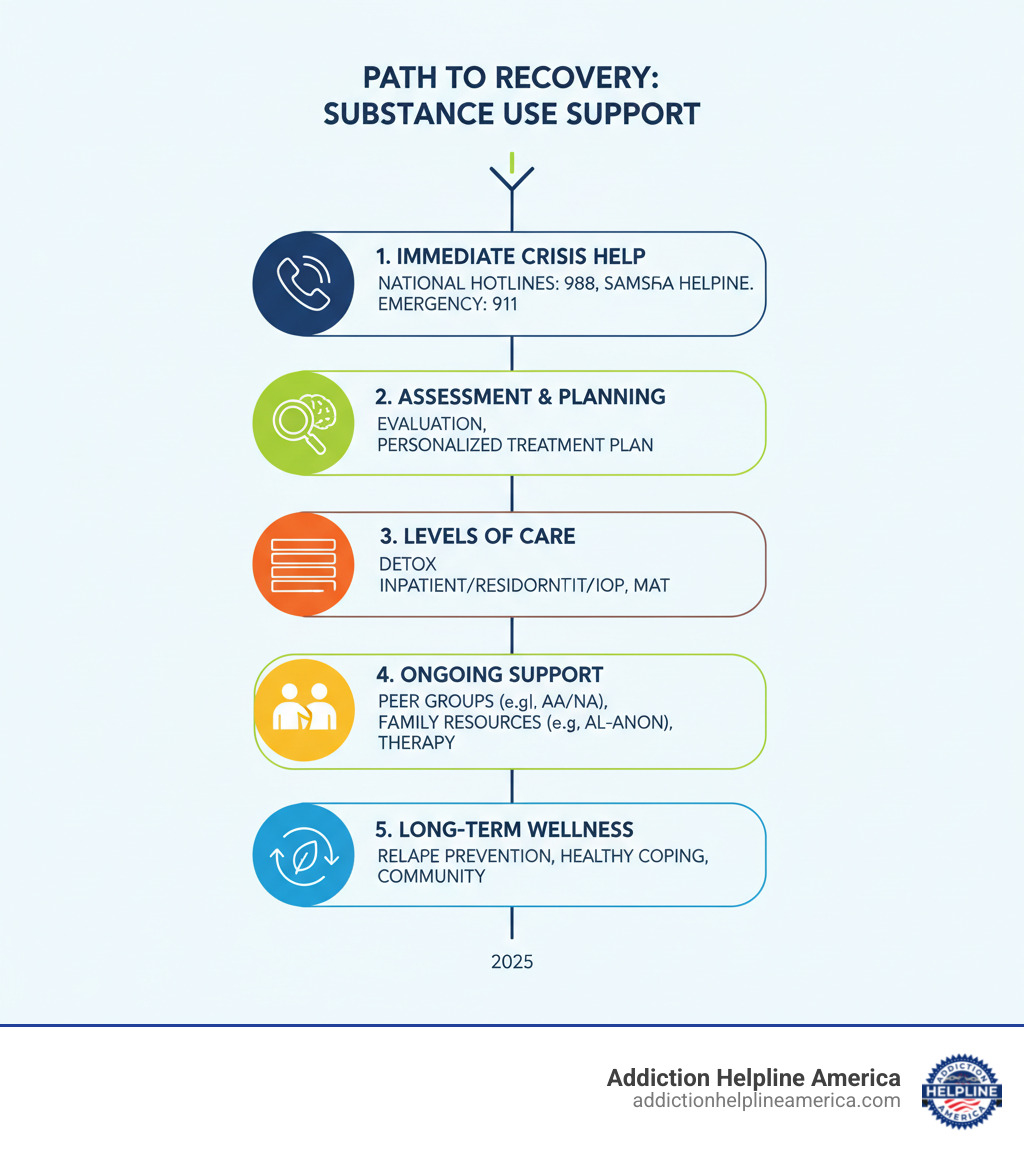
Understanding Substance Use Disorder: The First Step to Healing
Before seeking substance abuse help, it’s helpful to understand that addiction is a medical condition, not a lack of willpower. Substance use disorder (SUD) is the clinical term for addiction, whether it involves alcohol, prescription drugs, or illegal substances.
Substances like drugs or alcohol flood the brain’s reward system with dopamine, creating intense pleasure. Over time, the brain prioritizes the substance above all else, leading to compulsive use.
It’s also important to know the difference between physical dependence and addiction. Physical dependence means the body is used to a substance and will experience withdrawal if it’s stopped. Addiction is deeper, involving compulsive drug-seeking behavior despite serious negative consequences in your life.
The signs of SUD often appear in three main areas:
- Behavioral changes: Using more than intended, strong cravings, and neglecting responsibilities at work, school, or home.
- Physical warning signs: Developing tolerance (needing more for the same effect) and experiencing withdrawal symptoms like nausea, sweating, or tremors when not using.
- Psychological symptoms: Mood swings, increased anxiety or depression, secretiveness, and loss of interest in once-enjoyed activities.
Professionals use the DSM-5 criteria to diagnose SUD, classifying its severity based on the number of symptoms present in a 12-month period:
- Mild SUD: 2-3 symptoms
- Moderate SUD: 4-5 symptoms
- Severe SUD: 6 or more symptoms
About half of people with SUD also have a co-occurring mental health condition like depression or anxiety. This is called a dual diagnosis, which is why comprehensive substance abuse help that addresses both issues is critical. Recognizing that SUD is a treatable medical condition is the first step toward recovery.
When You Need Help Now: Immediate Crisis Resources
Sometimes, the need for substance abuse help is an emergency. Knowing where to turn can be life-saving.
If someone is in immediate danger from an overdose or is threatening to harm themselves or others, call 911 right away. For suspected poisoning from drugs or alcohol, call the National Poison Control Center at 1-800-222-1222.
For urgent situations that are not immediately life-threatening, several national helplines offer free, confidential support around the clock:
-
The 988 Suicide & Crisis Lifeline is for mental health crises or thoughts of suicide that may accompany substance use. Call or text 988 to connect with a trained counselor. Learn more at 988lifeline.org.
-
The SAMHSA National Helpline at 1-800-662-HELP (4357) is specifically for individuals facing substance use disorders. It connects you with local treatment facilities, support groups, and community resources. Find more information at SAMHSA’s National Helpline.
These helplines are staffed by trained professionals who provide non-judgmental support. All calls are confidential, allowing you to speak freely about your situation and find the right substance abuse help for your needs.
Navigating Your Options for Substance Abuse Help
Once you’ve recognized the need for help, the next step is understanding your options. Recovery is not one-size-fits-all; the key is finding an individualized treatment plan that fits your specific needs.
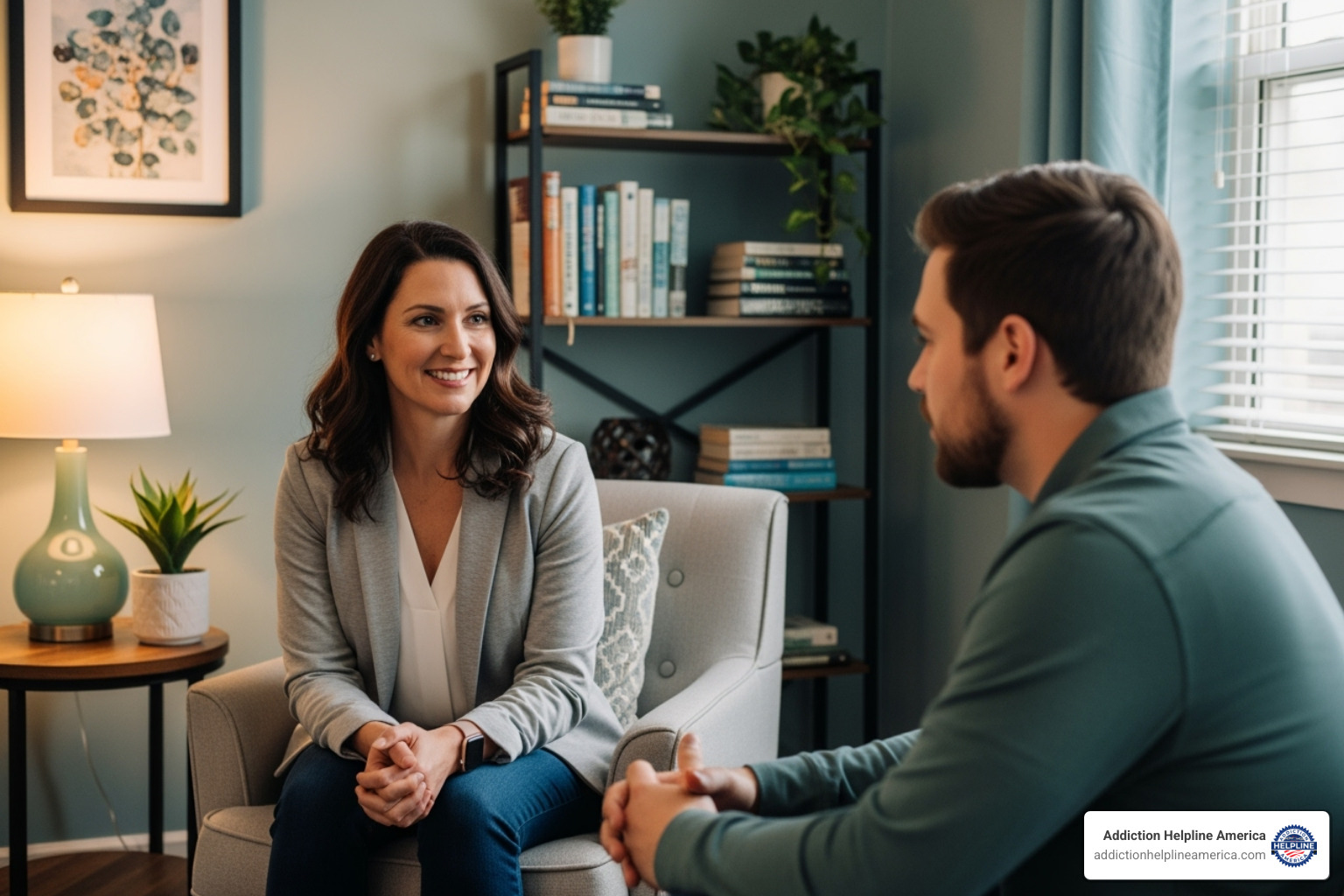
Addiction treatment exists on a continuum of care, with two main categories: inpatient (residential) and outpatient treatment.
| Feature | Inpatient/Residential Treatment | Outpatient Treatment |
|---|---|---|
| Duration | Typically 30, 60, or 90+ days | Varies widely, from weeks to many months or longer |
| Intensity | 24/7 medical supervision and therapeutic support | Scheduled sessions; patients return home afterward |
| Living Situation | Residing at the treatment facility | Living at home, attending sessions at a facility |
| Ideal Candidate | Individuals needing medical detox, high-risk for relapse, severe SUD, co-occurring disorders, unstable home environment | Individuals with mild-to-moderate SUD, strong support system, stable living situation, those transitioning from inpatient care |
Finding Professional Treatment Facilities
Many recovery journeys begin with detoxification, the process of safely managing withdrawal. Medically-supervised withdrawal is the safest and most comfortable way to detox.
- Inpatient or residential treatment offers the most intensive care, where you live at the facility. It’s ideal for severe SUD or those needing to escape triggers.
- Outpatient programs allow you to live at home while attending scheduled therapy. Intensive Outpatient Programs (IOPs) and Partial Hospitalization Programs (PHPs) offer more structured care for those who need it.
- Telehealth and online counseling make substance abuse help more accessible than ever, offering therapy via phone or video calls.
Ready to explore your options? You can start your search at Find a treatment facility near you.
Understanding Therapeutic Approaches
Effective treatment uses behavioral therapies to teach new, healthier ways of living.
- Cognitive Behavioral Therapy (CBT) helps you identify triggers and develop healthy coping strategies.
- Dialectical Behavior Therapy (DBT) is useful for intense emotions, teaching skills in mindfulness, distress tolerance, and emotion regulation.
- Other effective approaches include family therapy, which heals relationships, motivational interviewing, which builds personal motivation for change, and holistic therapies like yoga and meditation for stress management.
How Medication-Assisted Treatment (MAT) Works
Medication-Assisted Treatment (MAT) combines FDA-approved medications with counseling to treat opioid and alcohol use disorders. The medications work by normalizing brain chemistry to reduce cravings and manage withdrawal symptoms. For opioid use disorder, medications include buprenorphine, methadone, and naltrexone. For alcohol use disorder, options include naltrexone, acamprosate, and disulfiram. MAT is an evidence-based approach that significantly improves recovery outcomes. Learn more at Learn about Medication-Assisted Treatment (MAT).
Help for Co-occurring Disorders
About half of people with SUD also have a mental illness like depression, anxiety, or PTSD. This is called a dual diagnosis. For recovery to be successful, it’s crucial to find integrated treatment programs that address both the substance use and mental health conditions simultaneously. Addiction Helpline America can connect you with facilities specializing in dual diagnosis treatment.
Building a Support Network for Lasting Recovery
Recovery is not a journey to walk alone. A strong support network provides community, shared experiences, and accountability, which are powerful tools for lasting sobriety. Surrounding yourself with people who understand your struggles combats the isolation that often accompanies addiction.
Peer Support Groups
Peer support groups offer a unique form of substance abuse help from people who have walked in your shoes. These groups provide a safe space to share struggles and celebrate wins without judgment.
- 12-Step programs like Alcoholics Anonymous (AA) and Narcotics Anonymous (NA) are widely accessible and use a structured, peer-led approach.
- Alternatives include SMART Recovery (science-based), Recovery Dharma (mindfulness-based), and LifeRing Secular Recovery (non-spiritual). Most offer both in-person and online meetings, making support more accessible than ever.
Resources for Families and Loved Ones
Addiction impacts the entire family. Loved ones often struggle with worry and confusion, and learn the difference between supporting recovery and enabling substance use. Family support groups like Al-Anon (for alcohol) and Nar-Anon (for drugs) are invaluable resources. They teach families how to set healthy boundaries and care for their own well-being. Family therapy can also be instrumental in healing damaged relationships and improving communication.
Specialized Resources for Specific Populations
Everyone deserves treatment that understands their unique experiences. Specialized substance abuse help is available for groups such as veterans, who may deal with trauma and PTSD; youth and young adults, who need age-appropriate care; LGBTQ+ individuals, who benefit from culturally competent programs; and others who may find strength in culturally-specific programs that integrate their values and identity into the healing process.
Overcoming Barriers to Recovery
Seeking help is brave, but practical challenges like cost and logistics can feel like major barriers. The good news is that these obstacles are surmountable, and you don’t have to figure it out alone.
How to Pay for Treatment
Financial worries shouldn’t prevent you from getting the substance abuse help you need. There are many ways to cover the cost of treatment.
- Health Insurance: The Affordable Care Act (ACA) requires most insurance plans, including private insurance, Medicaid, and Medicare, to cover substance use disorder services. It’s important to verify your benefits to understand what your specific plan covers.
- Other Options: If you don’t have insurance, many states offer state-funded programs. Treatment centers may also offer sliding scale fees based on your income, or flexible payment plans. Non-profit organizations and community health centers can also be sources of free or low-cost care.
The Role of Lifestyle and Nutrition
Recovery involves healing your body as well as your mind. Substance use takes a serious toll on physical health, often leading to nutrient deficiencies that cause fatigue and poor health.
- Nutrition: Eating balanced meals with whole foods gives your body the building blocks it needs to repair your brain and body.
- Exercise: Physical activity is a natural mood booster that releases endorphins, reduces stress, and improves sleep.
- Healthy Routines: Establishing consistent sleep schedules and finding healthy hobbies are crucial for creating a lifestyle that supports long-term sobriety. Taking care of your physical health is a powerful way to reclaim control and build a life you don’t want to escape from.
Sustaining Sobriety: Relapse Prevention
Relapse is not a failure. Recovery is a lifelong journey, and a detour does not mean you’ve gone off track permanently. Relapse is a process, and learning to recognize its warning signs allows you to take action before it happens.
Substance abuse help continues long after formal treatment ends. A strong relapse prevention plan is a crucial part of your recovery toolkit.
Warning Signs and Prevention Strategies
Relapse often begins long before a person uses a substance again. It starts with emotional relapse (isolation, poor self-care) and progresses to mental relapse (romanticizing past use, planning to use).
The key to prevention is catching these early signs. Identifying your personal triggers—the people, places, and feelings that spark cravings—is the first step. Once you know your triggers, you can create a relapse prevention plan. This is your personal roadmap for handling tough moments, and it might include calling a sponsor, attending a meeting, or using coping skills learned in therapy.
A simple tool is the acronym HALT: ask yourself if you are Hungry, Angry, Lonely, or Tired. Addressing these basic needs can often diffuse a craving.
Ongoing support is vital. Aftercare programs, such as continued therapy or alumni groups, provide structure and accountability. Sober living homes can also offer a supportive, drug-free environment to bridge the gap between inpatient treatment and returning home.
Frequently Asked Questions about Finding Help
Reaching out for substance abuse help brings up many questions. Here are answers to some of the most common concerns.
How do I help a loved one who doesn’t want it?
This is a heartbreaking situation, and while you can’t force someone into recovery, you are not powerless.
- Consider staging an intervention with the help of a professional interventionist. This is a structured, loving conversation to present treatment options.
- Learn to offer support without enabling. This means encouraging recovery while letting your loved one face the natural consequences of their actions.
- Set firm boundaries to protect your own well-being. This is not about punishment, but about self-preservation.
- Seek your own support through groups like Al-Anon and NAR-Anon.
What is the difference between substance abuse and addiction?
Though often used interchangeably, these terms have different meanings. Substance abuse refers to a pattern of harmful use that causes problems, like drinking and driving. Addiction, or severe Substance Use Disorder, is a brain disease characterized by a compulsive need to use substances despite devastating consequences. A person with an addiction feels unable to stop without help. Both are treatable, and recovery is possible.
How can technology help in finding treatment?
Technology has made finding substance abuse help easier and more accessible.
- Online directories, like SAMHSA’s treatment locator and our platform at Addiction Helpline America, allow you to search for facilities based on location, insurance, and type of care.
- Telehealth services connect you with therapists via video calls, which is ideal for those in rural areas or who prefer to receive care from home.
- Mobile apps for recovery offer daily support, tracking tools, and peer connections.
- Virtual support groups like AA and NA can be attended from anywhere with an internet connection.
Technology meets you where you are, making it easier to start and sustain your recovery. You can explore many of these treatment options through our platform.
Your Path to Recovery Starts Today
Taking the first step toward recovery requires courage, but you don’t have to do it alone. Recovery is possible, and seeking substance abuse help is a sign of strength.
We know that reaching out can feel overwhelming due to worries about judgment or cost. These feelings are normal. What matters is that you are here, considering a change. A fulfilling life is achievable, and recovery is about creating a life filled with purpose and health.
At Addiction Helpline America, we ensure no one faces this journey alone. Our team provides free, confidential, and personalized guidance to help you find the right program from our network of treatment centers. We’ll listen without judgment and connect you with options that fit your unique needs.
You are not alone. The support you need is available right now. Today can be the day you choose a bright future over a painful past.
Get confidential, personalized guidance on your treatment options
Our helpline is 100%
free & confidential
If you or someone you care about is struggling with drug or alcohol addiction, we can help you explore your recovery options. Don’t face this challenge alone—seek support from us.
Programs
Resources
Will my insurance
cover addiction
treatment?
We're ready to help
Find the best
drug or alcohol treatment
center
Are you or a loved one struggling with addiction? Call today to speak to a treatment expert.
